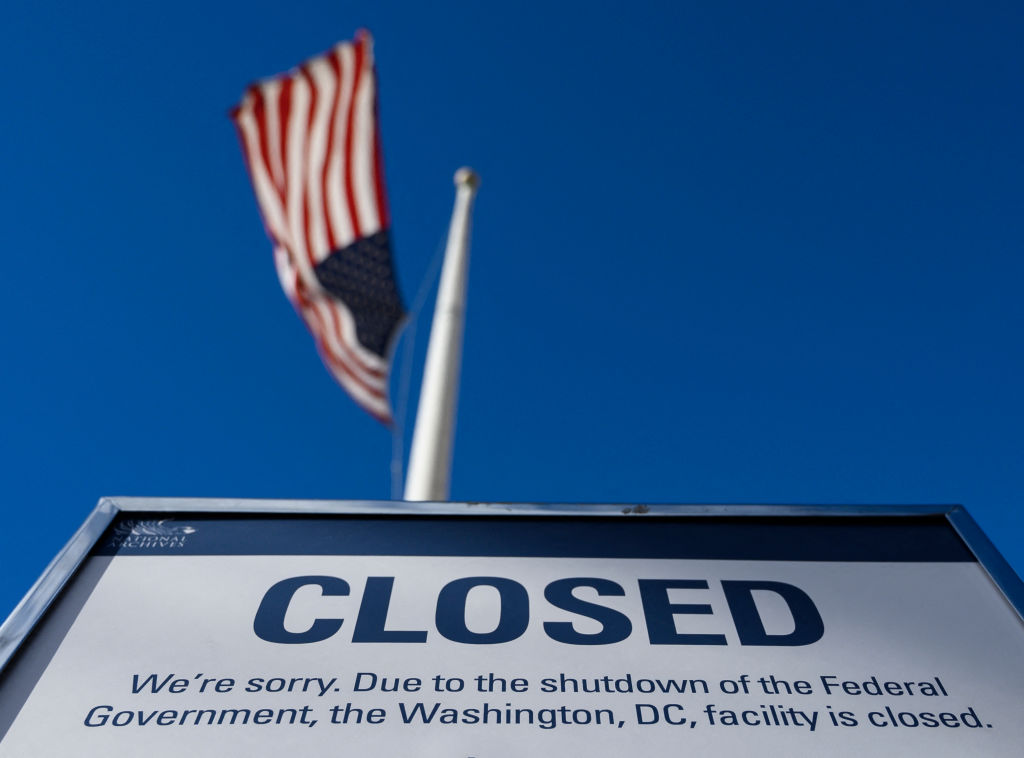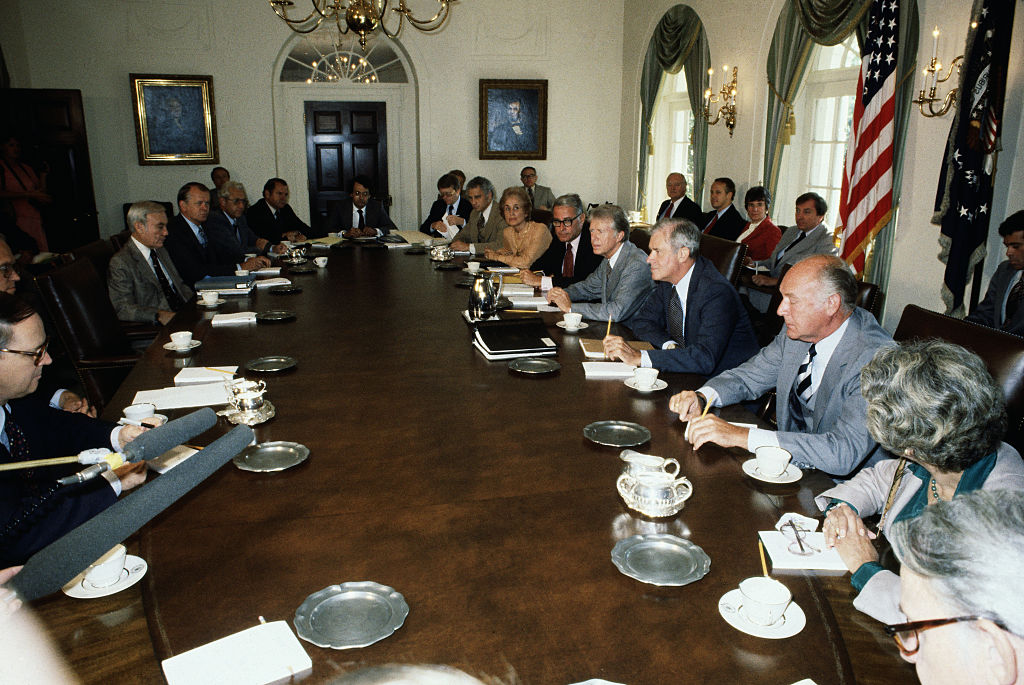Congress has narrowly avoided a government shutdown for the second time in three months, by kicking the can down the road and ensuring we'll be on shutdown watch again in both mid-January and early February.
For people who came of political age in the 1990s, shutdowns and the threat of shutdowns are a familiar story. Every president for the last 30 years has dealt with multi-day government shutdowns, the most recent and longest lasting for 35 days in 2018 and 2019.
Shutdowns are serious crises as the federal government tries to figure out which programs will be paid for and where the money will actually come from. Recent shutdowns have seen everything from federal workers and Coast Guard warfighters going unpaid to national parks being vandalized thanks to the absence of their staff.
Yet, as familiar as shutdowns now seem in our fractured politics, the idea of a “government shutdown” is a relatively new one in American history. The first true government shutdown—when defined as federal employees being furloughed because the government is unable to pay them—didn’t happen until 1980. The cause was a new interpretation of an 1870 law—one that upended how the government had functioned for close to two centuries. This history reveals that government shutdowns are not forced on us by the Constitution or even federal law—and suggests that there are multiple ways out of this recurring modern constitutional crisis.

The Constitution declares that “No Money shall be drawn from the Treasury, but in Consequence of Appropriations made by Law,” but this was not really an obstacle for presidents before the 1870s, much to the ire of many in Congress.
Read More: Here's How a Government Shutdown Could Affect You
Until the Civil War, the federal government routinely relied on what one historian later dubbed “coercive deficiency,” where executive branch agencies like the military allowed themselves to spend more money than their appropriations, trusting Congress to make up the difference.
Budget “hawks” were deeply skeptical of this practice, with Virginia Senator John Randolph declaring in 1806 that “[the executive branch is] like a saucy boy who knows his grandfather will gratify him, and over-turns the sum allowed him at pleasure.” But skeptics like Randolph could do little to dislodge the practice. In 1807, during a war crisis with Britain, even Thomas Jefferson, a skeptic of government debt, authorized the Army and Navy to spend money to prepare for war, expecting (rightly) that the anti-British feeling in the country would force Congress to pay for it.
In 1809, Congress tried to end the practice by passing a law stipulating that “Appropriations shall be applied only to the objects for which the appropriations were made except as otherwise provided by law.” Executive branch agencies, however, continued to routinely overspend and implicitly dared legislators not to pay the bills.
Matters came to a head during the Civil War when war-fighting and peacekeeping meant that government spending, both public and private, exploded. The typical federal budget ballooned from $60 million in 1860 to the hundreds of millions after 1865.
Once the wartime emergency passed, Congress was eager to reassert its “power of the purse.” Legislators passed several laws reforming the rules for government spending—the most significant being a group of statutes enacted in 1870, and later known as the Antideficiency Act. The new law plainly prohibited any department from expending “in any one fiscal year any sum in excess of appropriations made by Congress for that fiscal year, or to involve the government in any contract for the future payment of money in excess of such appropriations.”
Even these reforms, however, didn’t stop crafty agency heads from continuing to find loopholes, including securing “voluntary service” from government employees and creating legal obligations that were not technically contracts. With no penalties in the Antideficiency Act, sometimes they simply dared Congress to stop them. For example, in 1879, the Post Office spent its appropriated funds before the end of the fiscal year—and announced they would shut down unless Congress gave them more money. Congressmen fumed over this brazen blackmail, with one asking whether, “there ever was such audacity on the part of any departmental officer in time of peace” in U.S. history? But the mails were too important to stop—and the Post Office got its money.
Angry legislators wanted to avoid a repeat, so in 1884, they expanded the language of antideficiency laws. When that proved insufficient, in 1905, legislators established criminal penalties for breaching the ADA for the first time.
Even that, however, did not stop agencies from outrunning their appropriations. In 1947, for example, the Post Office was once again the culprit.
Congress kept trying to end this practice—for example by requiring agencies to maintain financial reserves. But ultimately very little changed for close to a century. When agencies hit a funding limit, they kept spending and counted on Congress to pay the bills later. Any threat to close came from agencies themselves as a tool for extracting more from legislators. The idea of Congress threatening a shutdown, however, never seems to have crossed anyone’s mind.
That is until Jimmy Carter’s second attorney general, Benjamin Civiletti, was forced to weigh in on the issue.

In the late 1970s, the decades-old Federal Trade Commission was under siege as the aggressive advocacy of its chairman Michael Pertschuk, in favor of anti-smoking reform and against television commercials that marketed sugary foods to children, made the agency the target of well-connected, powerful lobbying groups and their congressional allies. In April 1980, Congress allowed funding for the FTC to lapse—planning to submit legislation that would have limited the agency’s power to regulate.
During the debate, a congressional staffer approached the General Accounting Office about the meaning of the Antideficiency Act. The GAO initially asserted that “we do not believe that the Congress intends that federal agencies be closed during periods of expired appropriations.” But on April 25th, Civiletti reversed this determination.
Read More: Why Some Border Towns Are Worried About a Government Shutdown
One hundred and ten years after its enactment, he found for the first time that the Antideficiency Act allowed for no government agency to operate without funding. Civiletti announced he would prosecute any agency heads who violated this ban. According to him, the practices of the past hadn’t been legal since 1870—but no one had ever asked the attorney general about the meaning of the law.
And so it was that on May 1, a shocked FTC shut down for 24 hours: the first government shutdown in American history. A hasty appropriations bill passed that night, allowing the agency to resume its functions the next morning, costing the federal government more than half a million dollars. But the precedent had been set, one that continues to this day.
Under pressure from Carter during his final days in office, Civiletti did amend his decision to allow government agencies that protected human lives or private property to remain open. But Civiletti, and later Ronald Reagan’s first Attorney General William French Smith, continued to assert that, in general, executive branch agencies could not remain “open” without congressionally appropriated funding and violating that prohibition would warrant prosecution.
This move reshaped how Congress funded the government and laid the groundwork for every threatened or actual government shutdown over the last 40 years. In the last decade, both the pace and duration of shutdowns have accelerated; the weeks-long shutdowns of all or significant chunks of the government have dwarfed the day-long single agency shutdown of Civiletti’s time.
In an era where divided government has been the norm, the threat of a shutdown has become a potent weapon to try to wring concessions from the other side.

Yet, history indicates it does not have to be this way. The government shutdowns, furloughs, and crises brought on by our polarized times were not the byproduct of legislative debate or the intentional enactment of a law mandating such shutdowns. And for much of our history, such closures would have been unthinkable. Even for a century after the passage of the Antideficiency Act, the government stayed open even when federal agencies had deliberately outrun their budgets. It took a novel legal opinion and the growing polarization of the last 40 years to create the environment in which shutdowns weren’t just possible, but a regular occurrence.
We could, however, return to the practices of the past through one of several pathways. Congress could amend the Anti-Deficiency Act, though given that agencies still violate it, that seems less likely. The Attorney General could reverse Civiletti’s ruling, with the courts supporting such a determination. Or a federal agency could orchestrate a court challenge to Civiletti’s interpretation, and the courts themselves could overturn it.
Only politics has prevented a serious effort to end the uncertainty and restore governmental function to where it stood for most of history, and that’s proving increasingly untenable as shutdowns grow longer and more frequent.
M.A. Davis is a historian and high school program coordinator at Southwestern Community College in Sylva, N.C. Made by History takes readers beyond the headlines with articles written and edited by professional historians. Learn more about Made by History at TIME here.
More Must-Reads from TIME
- Cybersecurity Experts Are Sounding the Alarm on DOGE
- Meet the 2025 Women of the Year
- The Harsh Truth About Disability Inclusion
- Why Do More Young Adults Have Cancer?
- Colman Domingo Leads With Radical Love
- How to Get Better at Doing Things Alone
- Michelle Zauner Stares Down the Darkness
Write to M.A. Davis / Made by History at madebyhistory@time.com
